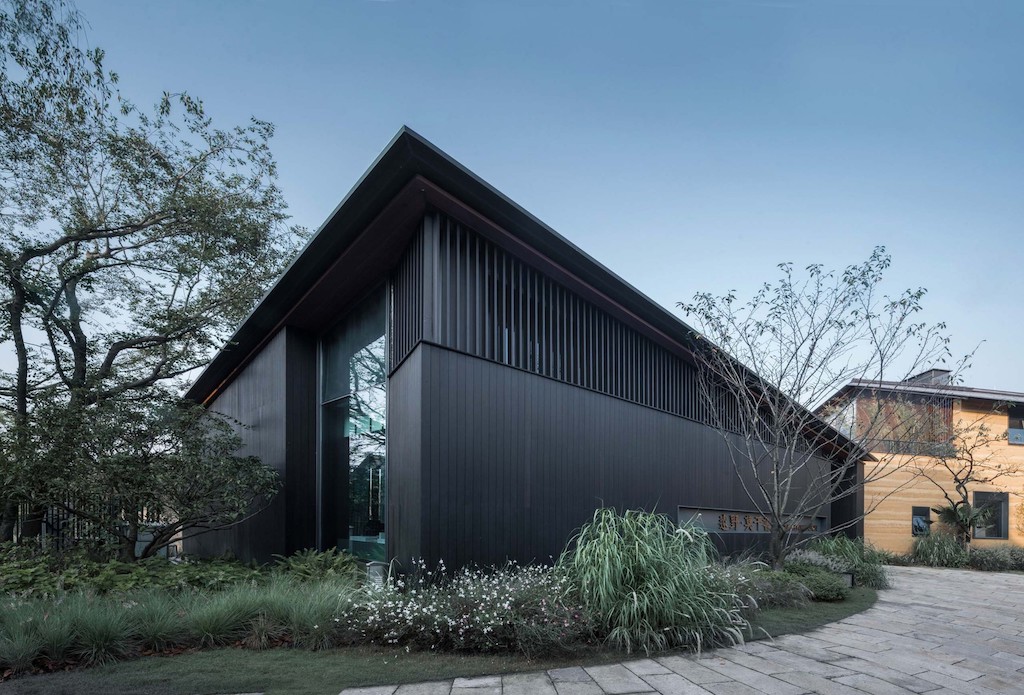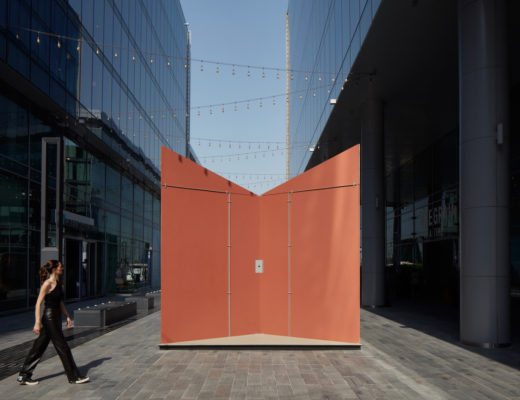Located in the eastern foot of Mogan, Deqing City, between five valleys, Mogan Academy by gad.line+ Studio, led by chief architect Meng Fanhao, is a community centre in the rural area. The site retains the existing farmland texture and the long valley view corridor, which is characterised by its rice fields. This is also the location of an agricultural museum, which is a window to enrich and educate people about the significance of farming.
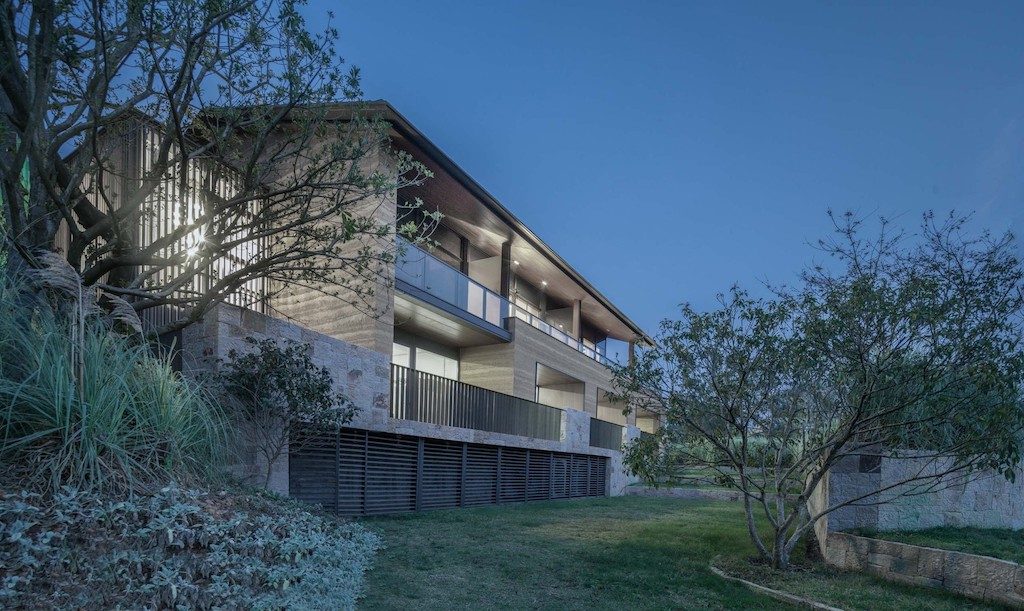
The bookstore is located in the green mountains and fields, away from the urban hustle and bustle. The design is based on the concept of creating a modern high-quality rural life with natural scenery that highlights the traditional culture. The project consists of a 140㎡ book bar and seven guest rooms. The library bar provides cultural space and public social places for rural life. The thick plate folding roof structure of the library has been conceptualised to create a large space without beam, so as to ensure unobstructed spaces.
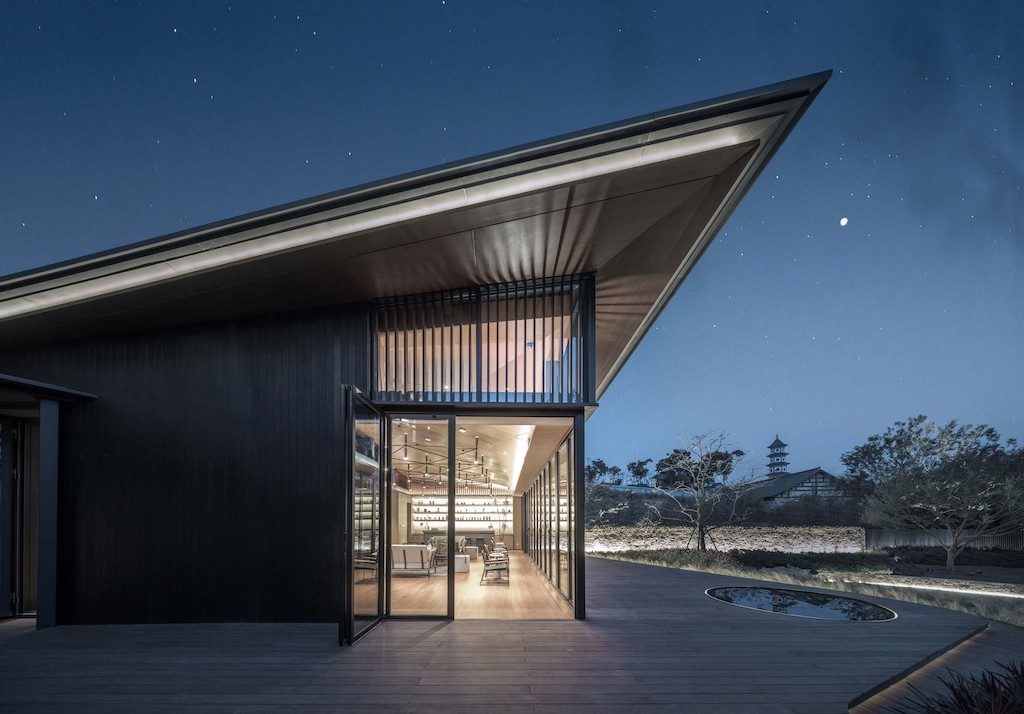
The interior space of the bookstore reinforces the concept of “cantilevered roof” expressed by the architecture and structure. The entrance, the book bar and the bathroom exist as a textured background, and all the activity space and visual focus are “pushed” to the “L-shaped” corner of the building. Functional versatility and flexible division have been taken into account in the layout and space separation.
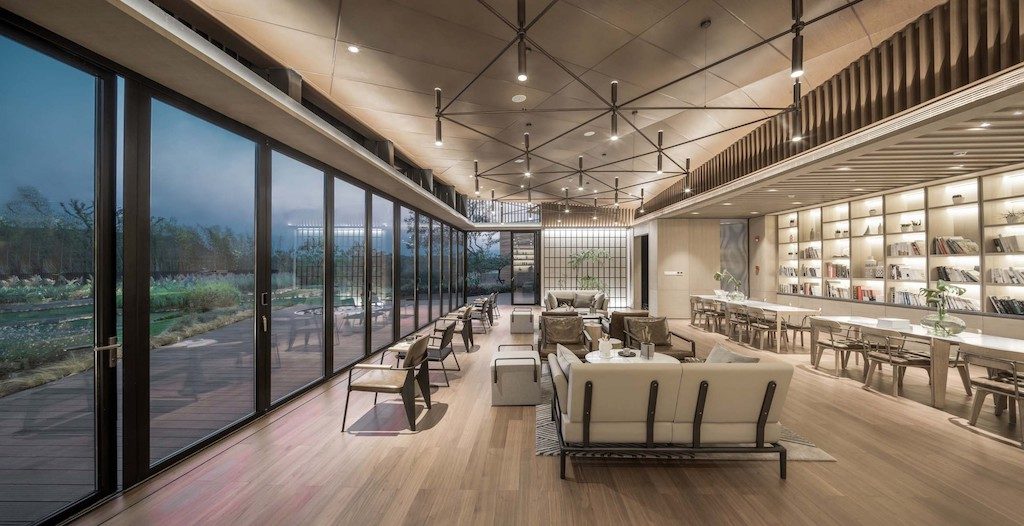
In the use of material, a large number of wood grain finishes have been used for the “background”, to express integrity. Metal rods, vacuum slabs, acrylic tubes and other materials with exquisite texture and strong contrast are adopted for interior space and outdoor extensions, to add visual effects and create the centre of space. The wood grain of the roof is consistent with the direction of the structure, and the wood floor on the ground is highly unified with the colour of the outdoor bamboo floor, thus naturally blending the architecture, the interior and the landscape.
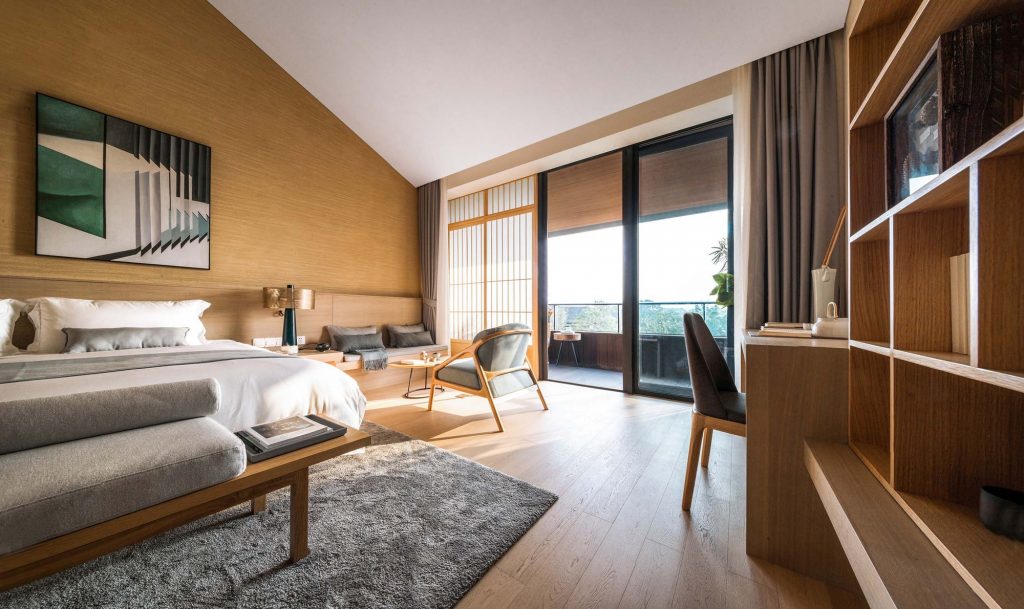
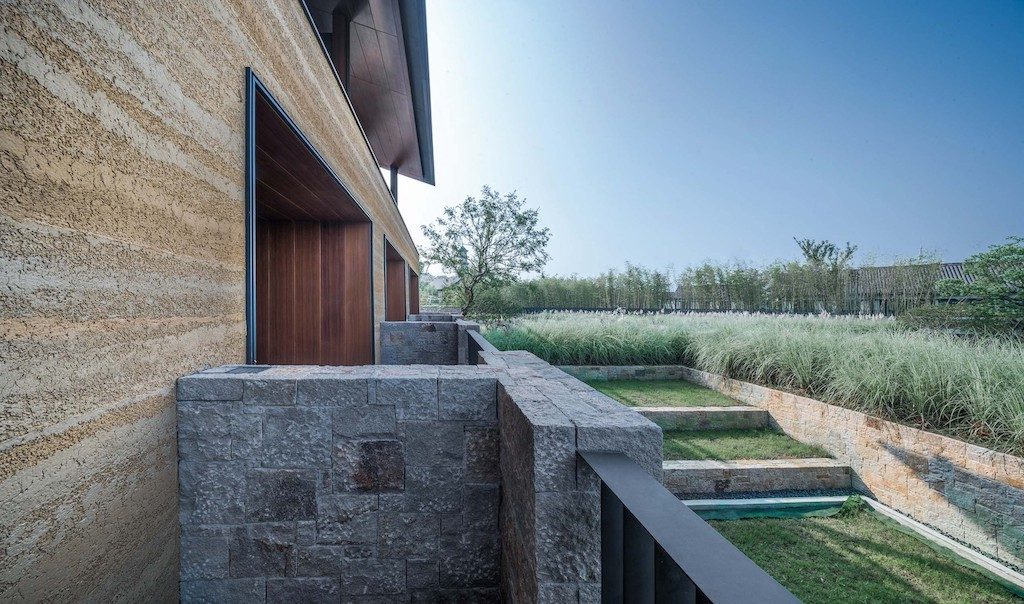
According to the terrain, the guestrooms are open to the farmland and mountain forest with expansive landscape views, and the low-rise small-scale building volume sits in harmony with the rural style. Traditional double slope roof is selected for the single building roof of guestrooms, but modern materials and techniques are adopted for interpretation.
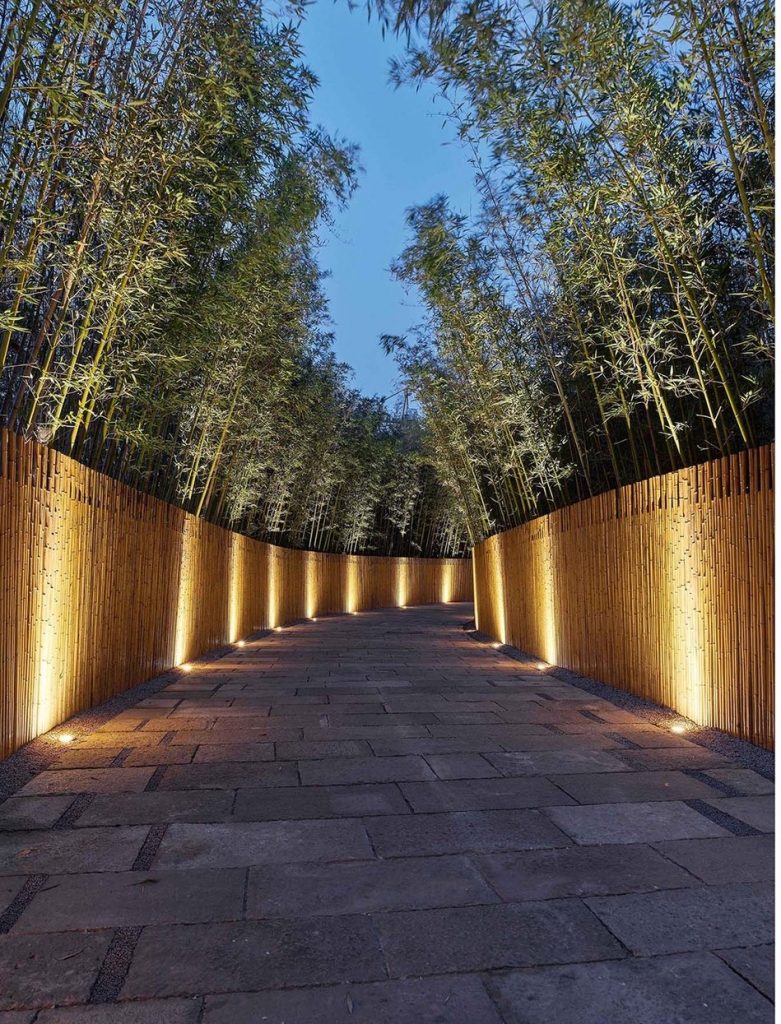
The main tone of wall materials is plain rammed earth, rubble, bamboo and wood wall panels, emphasising the sense of growth and the locality of the building.
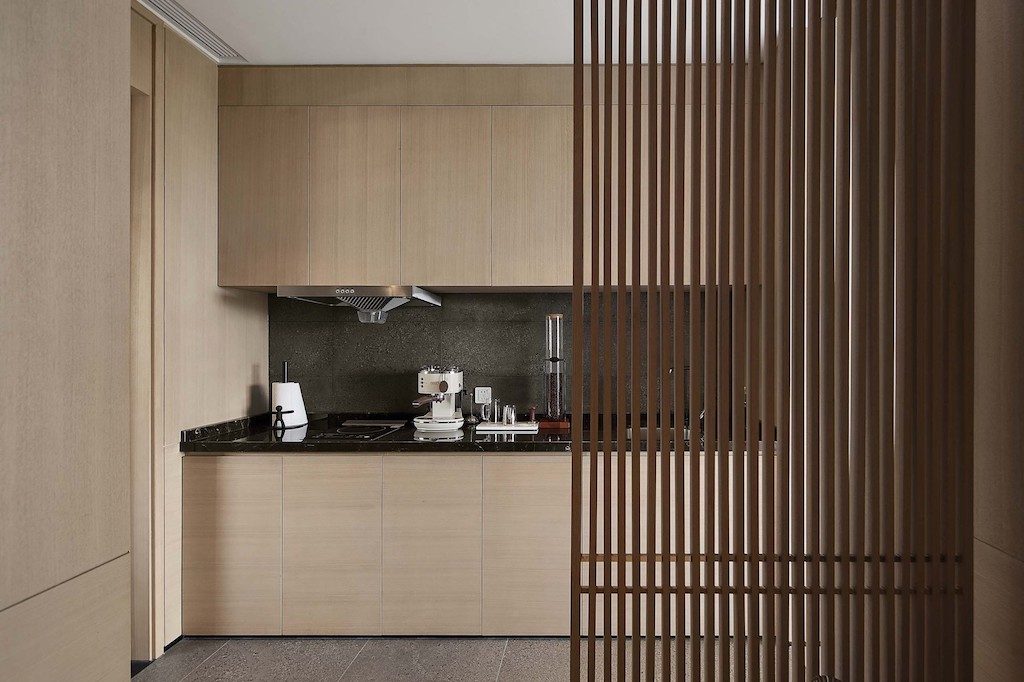
The interior space of the guest room still reinforces the overall architectural concept. In terms of space, the activity space (living room and activity space) is pushed to the balcony area to expand the activity scope of guests, so as to better enjoy the outdoor landscape and to create an experience that is different from the usual urban lifestyle. The bedroom area is moved back to the stable area to form two parts with the bathroom that can be divided or combined, which are independent of each other without interference.
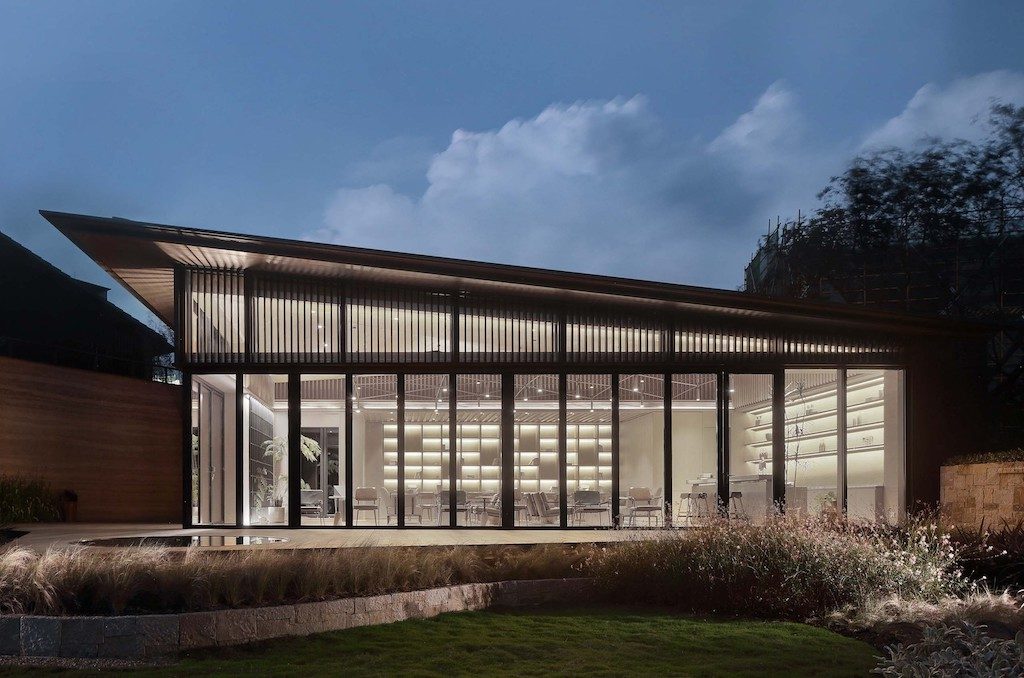
At the same time, some of the material and texture of the exterior of the building is retained to extend inwards. The rammed earth texture coating of the exterior wall is treated and applied to the facade decoration, reflecting the special charm different from that of the city hotel.
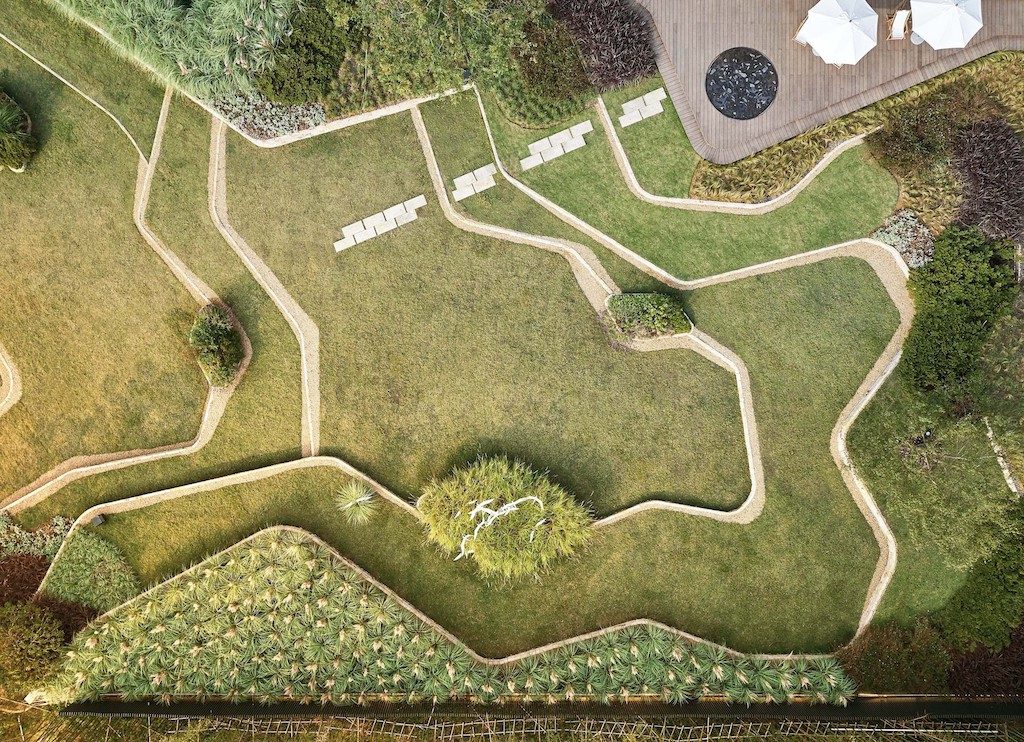
Landscape design also hopes to build a new channel of communication between human and nature. Starting from the nature of the site, it integrates ecology, space and farming culture, integrates geometric forms into ecological thinking, and displays the unique rural characteristics of the site.
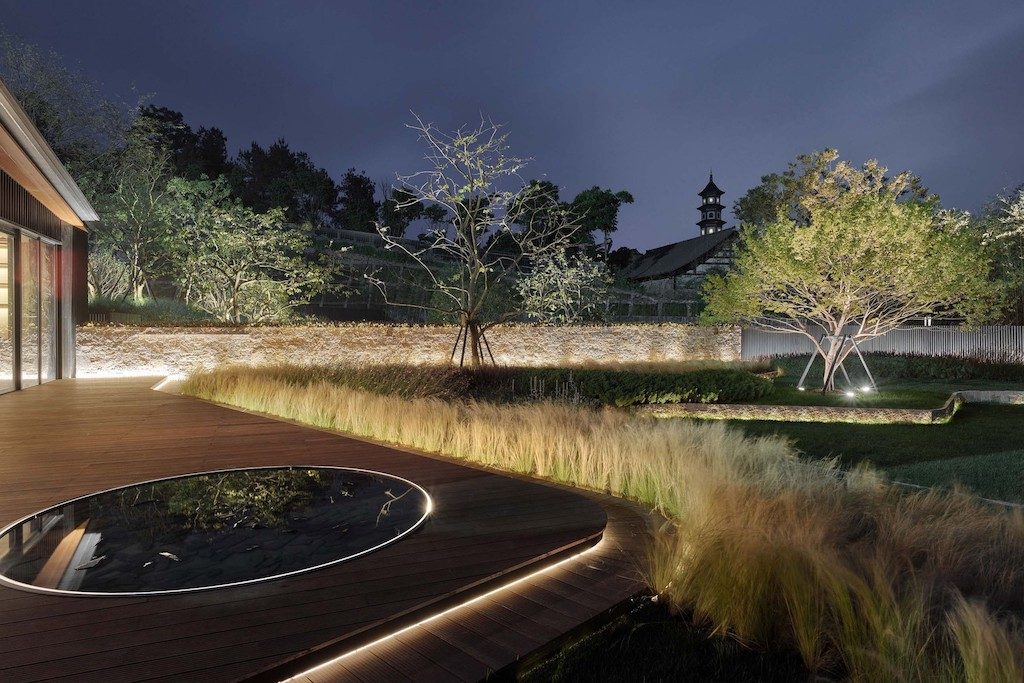
In the form of steps from southeast to northwest and down the hillside, the mountain terrain is combed, the level and edge are considered, multiple directions are added, and space collision is intensified. The upper layer is an inward gathering space, encouraging mutual communication, and the lower layer is an open space, open to the rice field, thus providing a variety of dynamic experiences on the one-way hillside.
The abundant spatial volume provides a structure that is consistent with the local planting pattern, rotating between perennial herbs and local cash crops to cultivate the soil for sustainable farming. The introduced plants have optimized meaning for the site environment. Tall Stipa tenuissima, Pennisetum and Cortaderia argente are planted in patches. The border is dotted with plants such as speedwell, trachelospermum jasminoide, Astilbe chinensis so as to consolidate the soil and protect the slope, purify the water quality, and form a simple and comfortable spatial sequence.
For the round pool paved with lake stones in front of the bookstore, the flying bird sculpture provides natural dynamism in the rice field, and the stone wall is piled with unique grid structures.
Photos: Lei Sun, Jianzhi-Arch, ingallery, Kai Zhou

